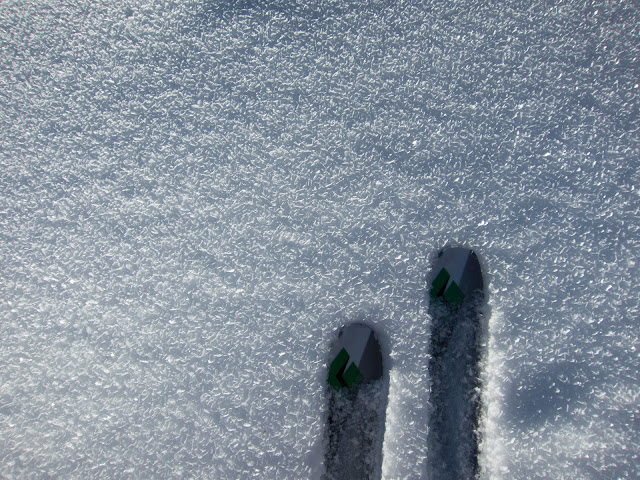 |
| Going into the mountains in winter conditions requires warm, versatile clothing. |
I plan to use these pants as "happy pants" or "belay pants." I'll put them on over all my other layers for added warmth (and happiness at stops or during the coldest part of the day when winter camping, ski touring, mountaineering or winter climbing.) I look forward to being able to zip them on without removing my boots, crampons or skis if needed and may sleep in them to extend the comfort range of my sleeping bag on the coldest nights.
They should be a bit warmer then the similarly priced Outdoor Research Neoplume pants which use lower performing Primaloft eco insulation. Most other similar light synthetic insulated pants (Rab Photon, Mountain Hardware Compressor, Brooks Range Cirro, Montbell Thermawrap Tec, Eddie Bauer Fist Ascent Ignitor, Arcteryx Atom Lt and the discontinued Patagonia Micro Puff and forthcoming Patagonia Das Pant) cost between $170 and $200. Some of those pants like the Rab and Patagonia models use 100 gsm Primaloft One insulation making them warmer and heavier but the the 60 gsm insulation in the Vajra should be sufficient for use here in Montana and save a few ounces.
 |
| Worn over thick Patagonia r1 long underwear bottoms and Rab Exodus Softshell pants. |
I wear large or 34" waste pants in most brands and the large Vajra fit well. They are a tiny bit tighter then I would like in the thighs but still just loose enough to wear over layers and close enough to wear beneath a loose fitting shell if needed. If you are between sizes or plan on wearing them over bulky layers I might size up.
Construction and design seems excellent, fully in line with what you from a more expensive and better known brand. They have minimal features keeping them light. They lack pockets or a drawstring but do have a wide elastic waste band, narrow elastic cuffs, zippered fly that unzips from the top or bottom and full, dual direction side zippers with velcro tabs at the top and snaps at the bottom. They are made with lightweight fabric throughout but the synthetic insulation should stay in even if they get worn or torn.
I'll report back on the long term of durability and performance of the pants after I've used them extensively.
 |
| Top of side zipper with velcro tab. |
 |
| Bottom of side zipper with snap. |
 |
| Top of pants showing fly, elastic waste and Endless Knot symbol. |
Unlike many technical garments, they are offered in both a men's and women's version though the women's appears even more difficult to find.
I have two pairs of waterproof pants made by Sherpa and bought at discount from steepandcheep. The Thamel 2.5 layer pants have proven to be a great light rain pant to throw in the pack and the Lithang stretch woven 3 layer pant is excellent minimal yet durable technical pant.
I am surprised that Sherpa has not had wider adoption and distribution. Their garments are excellent deals at retail price yet many seem to only be available in odd sizes from online discounters. We tried to buy their 200 gsm Raajen belay parkas a few years ago after realizing they were warmer and cheeper then DAS parkas but were unable to find them after checking several retailers and calling the manufacture directly. This coat seems to have been since been discontinued. Next year they will offer NeoShell and eVent garments which will be on my short list to check out if I can get my hands on them.
 |
| Tags included with the Vajra verify the use of high end Primaloft One insulation and describe the company, warranty and labor practices. |
Sherpa is a company I'll continue to turn to for technical garments even if they don't have a roster of high profile sponsored athletes. Their simple construction and frequently discounted prices make them a particularly good choice for garments like insulated or rain pants where lightweight and packability are important.







































